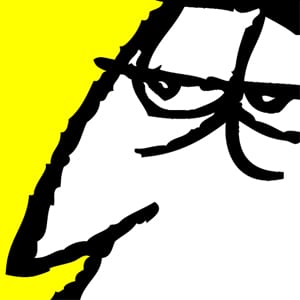Your portfolio matters.
Every top animation school requires a portfolio.
For 25 years, we’ve taught students everything they need to know to get into the school of their dreams.
Drawing excellence
is essential.
If your dream is to get into animation, you need to know how to draw. No “short cuts” or “tips on portfolio-making” can ever substitute for doing the work.
We know because drawing is all we do. 25 years of excellence in animation portfolio preparation has shown us that learning how to draw takes time and it’s worth it.
What's in a Portfolio?
APW Grad Christine Fitzgerald does an in-depth walkthrough of her 2020 accepted Sheridan Animation portfolio.
Top animation programs require you to submit a portfolio of drawings. How your portfolio is judged decides whether or not you receive an offer of admission. Competition for spots means it’s not enough to simply meet the requirements. To get into an animation program you need to aim high and distinguish yourself with outstanding drawings.
A typical animation entrance portfolio will contain a mixture of the following components.
Life Drawing
Several drawings of the human figure in various poses. These conte, charcoal or graphite drawings must be drawn “from life” and not from a photograph. A Life Drawing class with animation-related instruction is your best bet but the next best thing is a general life drawing class and/or an open Life Drawing session (3 hour session, each person pays per class, poses ranging from 30 seconds to 15 minutes in duration)
Object Drawing
Drawings of individual common household objects. Often these objects are based on basic geometric forms such as a sphere (an orange?), a box (juice carton?), a cylinder (water bottle?), a cone etc. An awareness of the structure that lies beneath the surface of the objects you draw will enable you to draw any given object from different angles
Layouts I
Drawings of an interior space combine a working knowledge of linear perspective and an understanding of composition with a feeling for a story to build a convincing and interesting layout. Use 2 point perspective to draw a room in your house (kitchen, bedroom?). When choosing a view of a room, avoid facing a wall directly. Look toward a corner instead. 12 to 15 feet away from a corner of the room will allow you to see and draw a satisfying wide-angle view of the room.
Layouts II
Drawings of an outdoor space that show your ability to bring together imagination, arial perspective, solid convincing forms, composition and a sense of story to build an interesting layout. It’s your chance to create a world from imagination. Like the room layouts, composition, visual interest and creativity are important, however, these drawings rely less on linear perspective to show depth.
Character Drawings
Your character design will show your ability to take something right out of your imagination and translate it into solid believable drawings that show creativity and personality. Other portfolio drawings are based more on observation and this one is all about visualization and imagination. Design an animation character and draw a turn-around of the character (front view, ¾ view, side view etc.) along with various action poses and facial expressions.
Hand Drawings
Storyboards
Animation
Some schools (Sheridan for example) require a brief sequence of hand-drawn animation – a number of sequential drawings that make up a brief film sequence. You may be given a time limit or a maximum number of frames. This is a chance to show your creativity and demonstrate some knowledge of animation basics and character drawing skills.
Personal Artwork
In addition to the required drawings, you may be asked to include artwork of your own choosing. Some schools may offer parameters for this portfolio piece (paintings, illustrations etc.). This is an opportunity to show a wider interest in other kinds of art that you create on your own.
About Us
Animation Portfolio Workshop is Canada’s first and original animation portfolio preparation program. Founded in 1999 by Gerard Sternik and Vince Peets, Animation Portfolio Workshop has set the standard for pre-art college training in drawing.
We are a social yet disciplined environment for budding animators to build a strong portfolio by cultivating proper technique and learning how to measure their progress.
The last 20 years of teaching have proven to us that learning how to draw will prepare you to take on the challenges of school – and beyond.
Animator, character designer, storyboard artist, visual development artist, layout artist, effects animator - all of these animation career paths have one thing in common: training.
Vince Peets, APW Director
